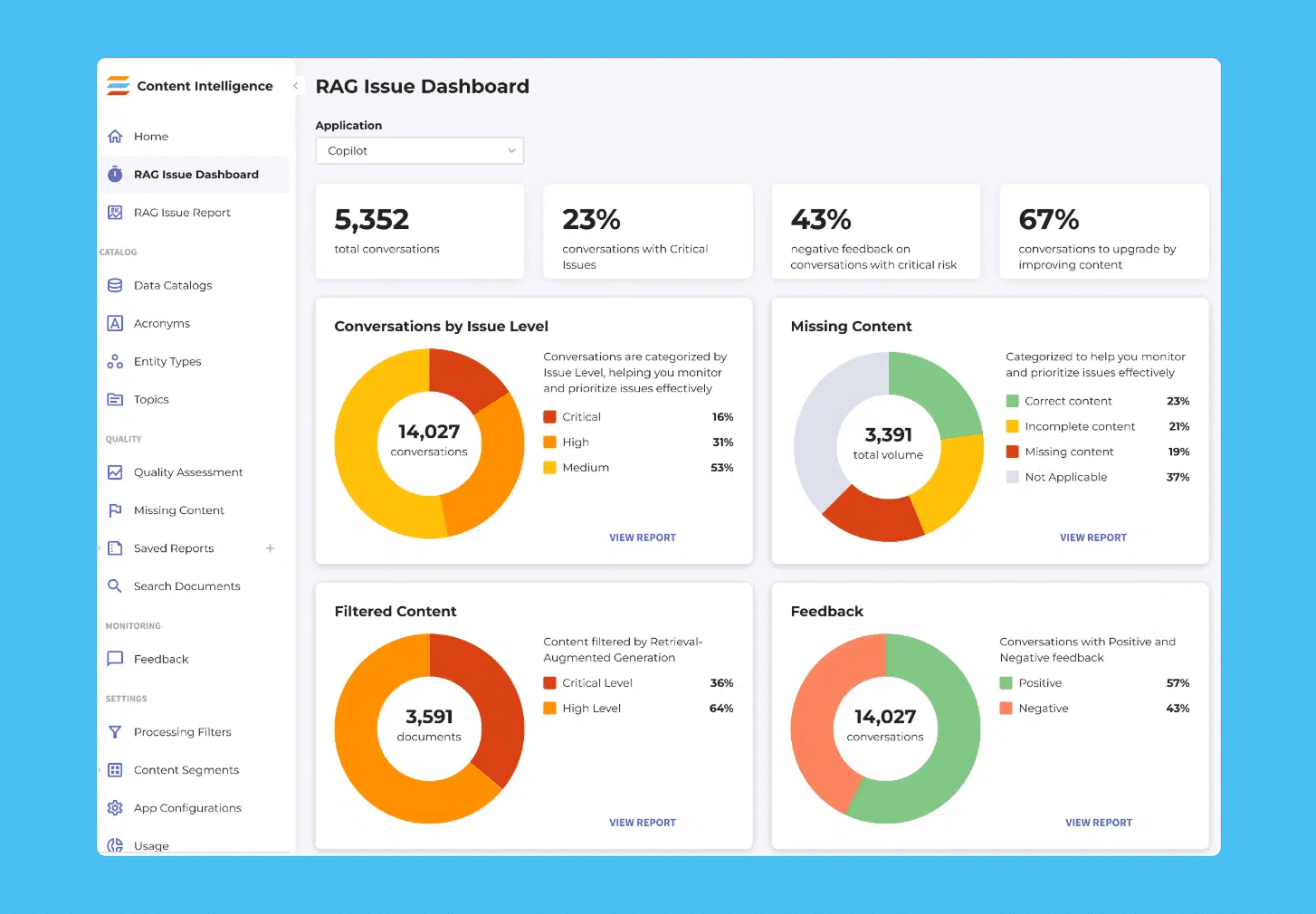Fairness metrics help you measure and reduce bias in your machine learning models. They provide a way to identify and address unfair treatment of certain groups or individuals.
AI systems have the power to influence decisions in areas like hiring, healthcare, and lending. This also means they can unintentionally reinforce biases or inequalities. Fairness ensures your AI models treat everyone equitably, regardless of their background.
By using fairness metrics, you can identify potential bias in your model’s predictions, measure the impact of your model on different demographic groups, and make adjustments to reduce unfairness and promote fair outcomes.
Fairness in AI is essential to ensure that your models don’t unintentionally harm certain groups and that they work for everyone.
What is Bias in Artificial Intelligence?
AI bias happens when machine learning models make unfair decisions based on biased data or flawed algorithms. This bias can show up in many forms—racial, age, socio-economic, or gender discrimination—and leads to unfair treatment of certain groups.
Bias can sneak in during various stages of AI development:
- If the data used to train the model doesn’t reflect the whole population, biases may follow.
- Historical biases in the data can be amplified by the AI system.
- If the algorithm focuses too much on specific outcomes without considering fairness, biased and unfair decisions might result.
For example, a hiring algorithm trained mostly on data from one demographic might favor similar candidates, putting others at a disadvantage. Similarly, facial recognition systems trained on non-diverse datasets often struggle to identify people from underrepresented groups.
To avoid bias, you need to ensure your data is diverse and your model is designed with fairness in mind.

The Role of Policy and Regulation
Governments and regulatory bodies are implementing laws and standards to ensure a notion of fairness in AI systems. Some examples are the EU’s AI Act and the Algorithmic Accountability Act in the US, which set guidelines for fair and ethical AI practices. It won’t be long before we see mechanisms for compliance and enforcement.
Transparency and accountability are central to these regulatory efforts and to producing favorable outcomes. We’ll see policies that require transparency in AI decision-making processes. This means AI systems can be audited and held responsible for their impacts.
What is the Purpose of Fairness Metrics in AI?
Fairness metrics are critical tools for identifying, measuring, and reducing bias in AI systems by introducing a notion of fairness. They help ensure your models don’t disproportionately harm any group or random individual. Let’s break down their key benefits.
Identification of Bias
Fairness metrics help you detect and quantify bias in your AI models. By applying these metrics, you can see where your model’s decisions may cause disparate treatment against certain groups.
For example, a model used in hiring might disproportionately reject applicants from a specific gender or ethnic background. Fairness metrics allow you to catch these issues early and take corrective action to provide a measure of individual fairness.
Evaluation of Model Performance
Fairness metrics also provide a framework for evaluating how well your model aligns with fairness goals and whether they create a disparate impact. You can use them to assess the trade-offs between accuracy and fairness.
Sometimes, a highly accurate model may still be unfair. By tracking fairness metrics, you’ll know whether your model is skewed in favor of particular outcomes (which could materialize as unfair discrimination) and how to balance performance with fairness.
Guiding Model Development
These metrics act as a guide throughout the model development process. Regularly checking fairness metrics during training and testing helps you refine your model to avoid bias.
For example, if your metrics show that the model creates discrimination with respect toward certain demographics, you can adjust your data inputs or algorithmic fairness to create more equitable results. This allows you to fix problems during training, rather than after the model is deployed to production, in order to produce more favorable outcomes.

Building Trust and Accountability
Stakeholders—including users, customers, regulators, and other decision makers—want to trust that your AI isn’t making biased decisions. By using fairness metrics, you show that you’re taking steps to make your AI accountable and equitable. This fosters trust and confidence in your technology.
Compliance with Regulations
With increasing regulations on AI, fairness metrics are becoming necessary to meet legal and ethical standards. These metrics help you ensure that your models don’t violate anti-discrimination laws or ethical guidelines. Ultimately, this products your organization from potential legal issues and align with best practices in AI governance.

What Does “Fairness” Mean? Equality, Equity, and Justice
When it comes to fairness in machine learning and AI, we’re really talking about three key perspectives: equality, equity, and justice. Each perspective offers a different way of making sure AI systems operate fairly at the individual level. Together, they help you build AI systems that are fair, inclusive, and accountable.
Important note: These fairness definitions aren’t exclusive. You can combine them to create more balanced and fair AI.
1. Equality
Equality is about treating everyone the same. In an AI system, this means using the same criteria for everyone, no matter their gender, race, or background.
For example, an AI used for hiring might evaluate all candidates based on identical factors. While this approach sounds fair, it doesn’t always consider the different challenges certain groups might face.
2. Equity
Equity goes a step further by recognizing that different people have different needs. It’s about leveling the playing field by providing extra support where it’s needed. In AI, this means building systems that take these differences into account.
For example, an AI learning tool might offer additional resources to help students from underrepresented backgrounds succeed.
3. Justice
Justice looks at fairness from two angles: How AI is created and how its outcomes are distributed.
Procedural justice is about making sure the process of developing and using AI is transparent and fair. This means including diverse voices in the design process, being open about how decisions are made, and making the system accountable.
Distributive justice ensures that the benefits and burdens of AI are shared fairly. This means making sure AI outcomes don’t unfairly harm one group while benefiting another.

5 Important Fairness Metrics
Fairness metrics provide a systematic way to measure and address biases. Each of these individual fairness metrics offers a unique perspective on what it means to be fair.
1. Statistical Parity/Demographic Parity
Statistical parity, also known as demographic parity, ensures that individuals from different groups have the same probability of receiving a positive outcome.
Use cases: Hiring algorithms to ensure equal hiring rates across genders and loan approval systems to provide equal approval rates across different ethnicities.
Limitations: It may not account for differences in group qualifications or characteristics and it can lead to reverse discrimination if strictly enforced.
How to Calculate Statistical Parity:
P(Outcome=1∣Group=A)=P(Outcome=1∣Group=B)
2. Equal Opportunity
Equal opportunity ensures that qualified individuals from different groups don’t receive unfair discrimination and have the same probability of receiving a positive outcome.
Use Cases: Educational admission systems to ensure equal chances for equally qualified students and job promotions to ensure equal opportunities for equally qualified candidates
Limitations: It requires accurate measurement of qualification, which can be subjective, and it may not address biases in the qualification assessment itself.
How to Calculate Equal Opportunity:
P(Outcome=1∣Qualified=1,Group=A)=P(Outcome=1∣Qualified=1,Group=B)
3. Equality of Odds
Equality of odds requires that the true positive rate and false positive rate are the same for different groups.
Use Cases: Equality of odds is used by the criminal justice system to ensure that equal false positive rates and true positive rates across different races. It’s also used in medical diagnosis systems to ensure equal error rates across genders.
Limitations: Equality of odds is difficult to achieve in practice, as it requires balancing multiple rates. It also may conflict with other fairness criteria and overall accuracy.
How to Calculate Equality of Odds:
P(Outcome=1∣Actual=0,Group=𝐴)=𝑃(Outcome=1∣Actual=0,Group=𝐵) P(Outcome=1∣Actual=0,Group=A)=P(Outcome=1∣Actual=0,Group=B)4. Predictive Parity
Predictive parity ensures that the predicted positive outcome has the same precision across different groups.
Use Cases: Predictive parity is used in loan default predictions to ensure equal precision across different demographic groups and in healthcare treatment recommendations to ensure equal accuracy across different patient groups.
Limitations: Predictive parity may not address underlying disparities in data distribution and it can conflict with other fairness metrics like equalized odds.
How to Calculate Predictive Parity:
P(Actual=1∣Outcome=1,Group=A)=P(Actual=1∣Outcome=1,Group=B)
5. Treatment Equality
Treatment equality focuses on balancing the ratio of false positive rate to false negative rate across different groups.
Use Cases: This metric is used in predictive policing to balance false arrest rates and failure to arrest rates across different communities. It’s also helpful in fraud detection systems to balance the rates of false alarms and missed frauds across different customer segments.
Limitations: It’s complex to calculate and interpret. It can also lead to trade-offs with overall model accuracy.
How to Calculate Treatment Equality:
P(Outcome=1∣Actual=0,Group=A) / P(Outcome=0∣Actual=1,Group=A) = P(Outcome=1∣Actual=0,Group=B) / P(Outcome=0∣Actual=1,Group=B)
Open-Source Fairness Metric Libraries
Fairness metric libraries can be a big help to make your AI systems more fair. These tools allow you to evaluate and reduce several types of biases in your models. Here’s a rundown of some of the most popular fairness metric libraries out there.
| Fairlearn | Fairlearn is an open-source Python library developed by Microsoft. It provides tools for assessing and mitigating unfairness in machine learning models. Fairlearn offers both fairness metrics and algorithms for reducing different types of biases. It also includes visualization tools to help interpret fairness metrics and mitigation results. |
| AIF360 | AIF360 (AI Fairness 360) is a comprehensive toolkit from IBM designed to help you detect and mitigate bias in machine learning models. It includes a wide range of fairness metrics and bias mitigation algorithms, making it a great all-in-one solution. |
| Fairness Indicators | Fairness Indicators is a library developed by Google to assess the fairness of machine learning models. It provides tools for evaluating fairness metrics and visualizing disparities across different demographic groups. It works seamlessly with TensorFlow Extended and TensorFlow Model Analysis. |
| FairComp | FairComp is an open-source library for comparing different fairness interventions and metrics. It provides a standardized framework for evaluating the trade-offs between fairness and accuracy. It also enables benchmarking of models against various fairness metrics. |
| Fairness Measures | Fairness Measures offers a collection of simple, easy-to-use tools to assess fairness issues. It’s not as broad as some other libraries, but if you need a straightforward way to calculate fairness metrics like disparate impact or equal opportunity, this tool will get the job done. |
| FairTest | FairTest is a testing toolkit designed to help you find discrimination in predictive models. It works by automatically scanning your model’s outputs for signs of unfair treatment across different groups. It can help you find where problems lie. |
| FairML | FairML focuses on understanding how fairness issues affect your model’s predictions. It helps you identify which variables might be contributing to biased outcomes. If you’re looking to figure out where bias is sneaking in, FairML offers solid insights. |
| Aequitas | Aequitas is a fairness auditing tool that helps you evaluate the impact of your machine learning models on different demographic groups. It provides reports on how fair your model’s decisions are, making it easier for you to spot where bias is creeping in. |
| Themis | Themis is a fairness testing library that focuses on individual fairness—ensuring that similar individuals receive similar outcomes from your AI system. It’s especially useful when you want to make sure your model treats people equitably at an individual level. |
| Themis-ML | Themis-ML is an extension of Themis, built specifically for machine learning models. It includes fairness measures and bias mitigation strategies tailored to common ML workflows. If you’re using machine learning and need more granular fairness controls, this tool is for you. |
| Fairness Comparison | Fairness Comparison is a benchmarking tool that allows you to compare different fairness metrics across models. It’s a handy way to see how various models stack up in terms of bias and fairness before deciding which one to deploy. |
Interpreting Fairness Metrics
Interpreting your fairness metrics is key to understanding how fair your AI models are, but it’s important to do it thoughtfully. Here’s how decision makers can make the most of your fairness metrics and avoid common mistakes.
Best Practices for Interpretation
To effectively interpret fairness metrics, follow these best practices:
Step 1: Use Multiple Metrics: Evaluate your model using several fairness metrics to get a comprehensive view of its performance. This approach helps capture different dimensions of fairness and identify potential biases.
Step 2: Contextual Analysis: Consider the social and practical implications of fairness metrics in your specific use case. Understand the impact of any disparities on the affected groups.
Step 3: Regular Monitoring: Continuously monitor fairness metrics as part of your model maintenance routine. Regular checks can help identify and address emerging biases over time.
Step 4: Stakeholder Involvement: Engage decision makers, including those from potentially impacted groups, in the evaluation process. Their insights can provide valuable perspectives on what constitutes fairness in your context.
Step 5: Balance Fairness and Accuracy: Aim for a balanced approach that considers both fairness and overall model performance. Evaluate how different fairness interventions impact model accuracy and make informed trade-offs.
Step 6: Iterative Improvement: Use fairness metrics to guide iterative improvements in your model. Continuously refine your approach based on results and decision maker feedback.
Common Pitfalls to Avoid
Several common pitfalls can lead to misinterpretation or inappropriate conclusions.
- Ignoring Context – Fairness metrics don’t exist in a vacuum. A metric that looks good or bad in one situation might mean something completely different in another. Always think about how the metric applies to your specific use case.
- Relying on a Single Metric – One metric alone can’t tell the full story. If you only use one, you might miss other fairness issues. Use a mix of metrics to get a full view.
- Confusing Correlation with Causation – If you see differences in fairness metrics across groups, don’t jump to conclusions. There could be underlying reasons, like differences in the data, that don’t mean the model is biased.
- Ignoring Trade-offs – Sometimes, improving fairness might mean your model becomes less accurate. It’s important to weigh these trade-offs and decide what’s most important for your goals.
- Static Evaluation – Fairness isn’t a one-time task. As your model evolves and new data comes in, new biases can emerge. Regularly checking fairness metrics helps you stay ahead of these issues.
Balancing Fairness and Performance
Fairness and accuracy often conflict in AI models. Improving fairness can reduce accuracy, and optimizing for accuracy can amplify bias. This happens because training data may reflect historical biases, and fixing these biases might limit usable data, impacting performance.
So how do we balance fairness and performance?
Pre-Processing Methods
- Data augmentation: Add diverse examples to training data.
- Reweighting: Adjust sample weights to ensure fair representation.
In-Processing Methods
- Fairness constraints: Build fairness rules into model training.
- Adversarial debiasing: Use adversarial networks to reduce bias without sacrificing performance.
Post-Processing Methods
- Threshold adjustment: Modify decision thresholds to balance outcomes.
- Output adjustment: Adjust model outputs for fairer distributions.
Model Evaluation and Selection
Use multi-objective optimization to weigh fairness and accuracy. Cross-validate on diverse data subsets to maintain balance across groups.
Real-World Examples of Accuracy/Fairness Tradeoffs
To help you understand the required balance of model accuracy and fairness, let’s look at some real-world examples.
Hiring Algorithms
A hiring algorithm that optimizes for historical hiring patterns may replicate biases against certain groups, but adjusting the model to ensure equal opportunity may reduce its accuracy in predicting future job performance.
Implement pre-processing techniques such as reweighting to balance the representation of all groups in the training data, and use fairness-constrained optimization during model training.
Loan Approval Systems
A loan approval system that uses credit history data might unfairly disadvantage minority applicants who have historically had less access to credit. Improving fairness might lead to higher default rates if not managed carefully.
In this case, you would use adversarial debiasing to minimize biases in the approval process while maintaining the model’s ability to predict loan repayment accurately. Implement continuous monitoring to adjust decision thresholds dynamically.

Healthcare Diagnosis Tools
A healthcare diagnosis tool trained on data from predominantly one demographic may not perform well for other groups, leading to disparities in treatment recommendations. Balancing fairness and accuracy can be life-critical.
Use data augmentation to include diverse patient data, and apply multi-objective optimization to ensure that the tool remains accurate while providing fair treatment recommendations across all demographics.
The Future of Fairness in AI
AI fairness is progressing quickly, with ongoing research and policy shifts pushing for systems that are both accurate and equitable. The focus is increasingly on integrating fairness throughout the AI lifecycle, from how data is collected to how models are deployed. Efforts to make AI more transparent and explainable are helping stakeholders understand biased decisions.
AI fairness is not just a technical issue—it’s a moral imperative. By embedding fairness into every stage of AI development, we can ensure that these systems promote justice, inclusivity, and ethical responsibility as they shape our world.




